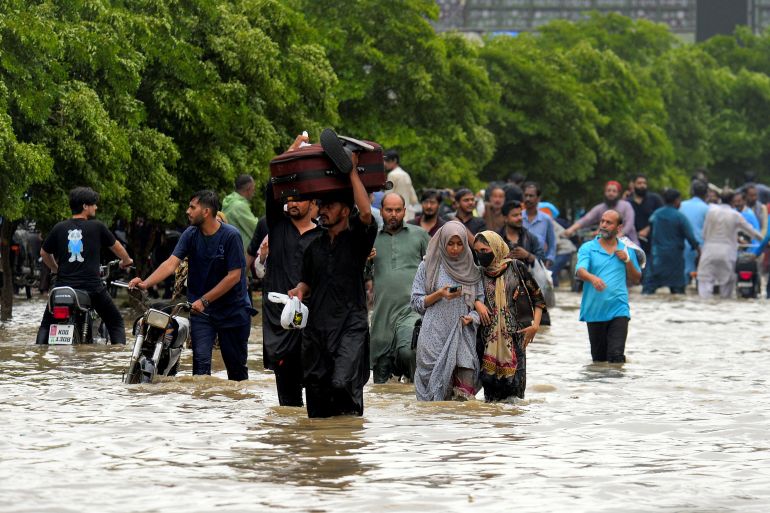In Karachi, Pakistan’s financial hub, where electrocutions and house collapses resulted from heavy rain, the National Disaster Management Authority (NDMA) reported on Wednesday that 11 people had died in Gilgit-Baltistan’s north and 10 others had died there.
As forecasters warned of additional downpours until Saturday, schools in Karachi, a city of more than 20 million, remained closed. Amir Hyder Laghari, the country’s top meteorologist, attributed the severe flooding to “weak infrastructure” to the city.
The deluge affected the city’s older pipes and drains, which buried entire neighborhoods in the ground. As a result of power and phone outages, residents were seen removing murky water from their homes.
In two districts, provincial officials reported 40 to 50 homes being damaged. By the end of the month, NDMA Chairman Inam Haider Malik predicted that “an additional (rain) spell would start.”
More than 350 people have died in Khyber Pakhtunkhwa, the province’s northern province, since last Thursday, according to the report. In areas prone to flash floods and landslides, authorities and army units are looking for dozens of unaccounted villagers. To clear clogged rivers and drainage systems, excavators have been used.
“We have set up relief camps where we are getting medical attention.” More than 220 people have died in recent days in Buner district, according to army Colonel Irfan Afridi, who told the AFP news agency. “We are also giving all the people dry rations and tents,” he said.
“The kids are afraid,” he said. They claim that fear prevents us from falling asleep at night, according to medical worker Anjum Anwar of a relief camp. Our entire settlements have been destroyed by the flood.
Pakistan’s mountainous north and flood-prone south are frequently destroyed by the monsoon season, which occurs between June and September. Authorities warn that it could rain until mid-September.
Source: Aljazeera

Leave a Reply